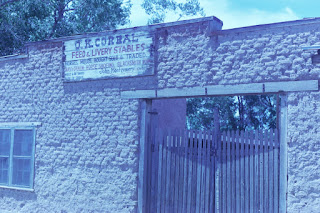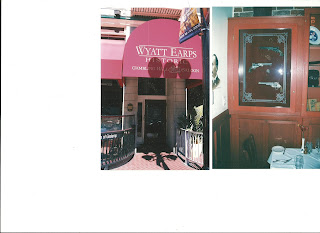AIRLINE MERGERS - A BRIEF HISTORY
Before it was open warfare in airline land, all was tightly controlled back in the late 1960's. Something called the Civil Aeronautics Board (CAB). ruled all of the airlines in America - ALL of them, and where they had flights, when, and what they charged. They had them tied up in knots.
North and South: generally, it was Eastern Airlines, Northeast and National Airlines.
East and West: United, American and TWA. Usually all three carriers had, if the demand was there, one flight in the morning, one at lunch, one at dinner. Maybe a night flight which was a positioning flight which was turned around for a morning flight back the next day.
Each carrier flying the same route charged the same fare. Period. The airlines called that "Regulated Air Service." Every so often fights would break out among them and the CAB would call a meeting which would have to be held in a large auditorium usually in a hotel. The place was jammed. There were a lot of airlines in those days. The CAB controlled the meeting, ruled on the final outcome, got the carriers back to work, and that was that.
Pressure mounted to " De-Regulate" the airlines; " turn 'em loose." The free market folks said, let them set their own rates, fly where they want, open market. Market choices will prevail. That happened.
Several things happened as a result: Fares dropped off, prices became so affordable, more public got a chance to ride. In the beginning, no more than 20% of the American public had ever been on an airliner. That's grown significantly. Secondly, airlines have dumped losing routes they no longer have to serve. With more revenue, some carriers can buy newer equipment and flourish.
Poorly run carriers suffer free market mistakes of poor management: they can no longer benefit from the largess of government handouts. They have to make money on their own. Failing that, they fail. This propagates mergers between carriers.
Allegheny Airlines, US Airways, and a half dozen other regional carriers all eventually merged into one another and finally, recently folded. Six regional carriers tried to survive a competitive environment and couldn't and all failed.
This process of de-regulation started as far back as the late 1960's where the cynical nay sayers had predicted that ulterior motives of the de-regulators nestled in the bowels of the government had other plans for the airline business. The gaggle of airlines had grown so large and cumbersome, a few speculated, that free market tussle would weed out the weak sisters, pare down the numbers, and as some had hoped, reduce the crowd at the monthly meetings to something resembling a large corner table luncheon instead of a convention.
Now, in 2015, the skin, flesh and quite a bit of muscle has been sown away revealing a lot of the bare bones of the industry. The Cynics of yesteryear, altho now dead, may have been proven right. The CAB, now relegated to the trash pile of dead agencies if it were to hold their monthly checks and balances would have a short agenda, smaller crowd, and a low lunch tab.
###
North and South: generally, it was Eastern Airlines, Northeast and National Airlines.
East and West: United, American and TWA. Usually all three carriers had, if the demand was there, one flight in the morning, one at lunch, one at dinner. Maybe a night flight which was a positioning flight which was turned around for a morning flight back the next day.
Each carrier flying the same route charged the same fare. Period. The airlines called that "Regulated Air Service." Every so often fights would break out among them and the CAB would call a meeting which would have to be held in a large auditorium usually in a hotel. The place was jammed. There were a lot of airlines in those days. The CAB controlled the meeting, ruled on the final outcome, got the carriers back to work, and that was that.
Pressure mounted to " De-Regulate" the airlines; " turn 'em loose." The free market folks said, let them set their own rates, fly where they want, open market. Market choices will prevail. That happened.
Several things happened as a result: Fares dropped off, prices became so affordable, more public got a chance to ride. In the beginning, no more than 20% of the American public had ever been on an airliner. That's grown significantly. Secondly, airlines have dumped losing routes they no longer have to serve. With more revenue, some carriers can buy newer equipment and flourish.
Poorly run carriers suffer free market mistakes of poor management: they can no longer benefit from the largess of government handouts. They have to make money on their own. Failing that, they fail. This propagates mergers between carriers.
This process of de-regulation started as far back as the late 1960's where the cynical nay sayers had predicted that ulterior motives of the de-regulators nestled in the bowels of the government had other plans for the airline business. The gaggle of airlines had grown so large and cumbersome, a few speculated, that free market tussle would weed out the weak sisters, pare down the numbers, and as some had hoped, reduce the crowd at the monthly meetings to something resembling a large corner table luncheon instead of a convention.
Now, in 2015, the skin, flesh and quite a bit of muscle has been sown away revealing a lot of the bare bones of the industry. The Cynics of yesteryear, altho now dead, may have been proven right. The CAB, now relegated to the trash pile of dead agencies if it were to hold their monthly checks and balances would have a short agenda, smaller crowd, and a low lunch tab.
###



Comments
Post a Comment